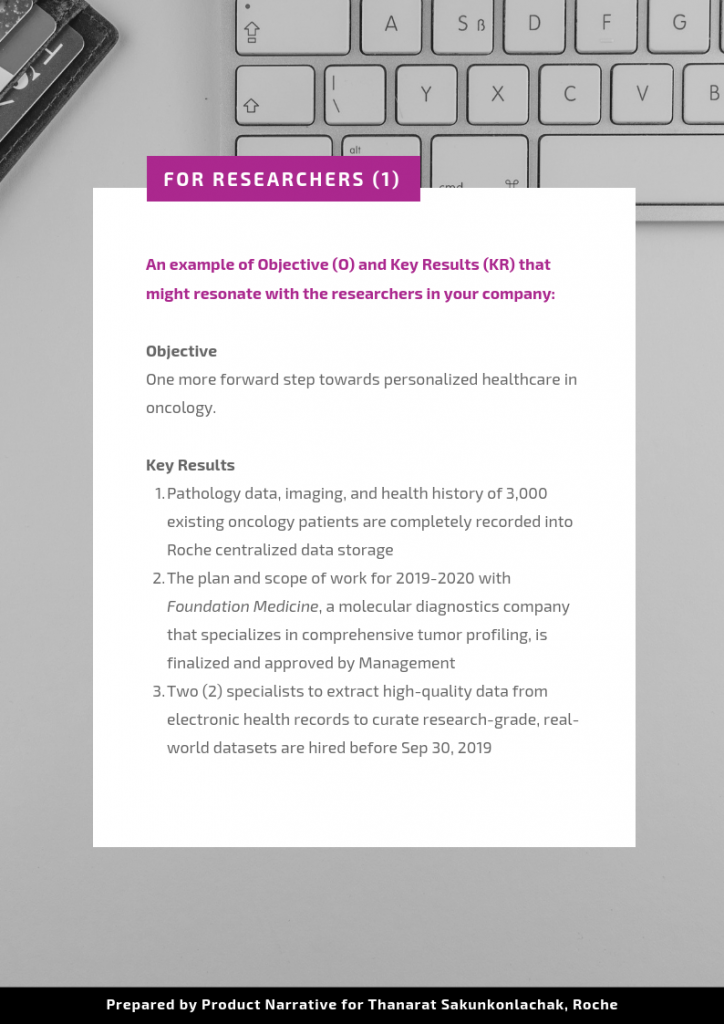Explore the "Objective and Key Results" Function and Support for Startup Innovation
OKR is a simple corporate goal setting framework designed
Usually in an organization need indicators to determine the effectiveness of the performance of its employees. There is an annual ritual called performance appraisal (PA) to provide value and rating to all employees, which resulted in reward or punishment.
With all its advantages and disadvantages, this ritual is quite time consuming and administrative and bureaucratic. Until in the end, replacing its main essence to develop talent and manage employees for the company's success.
Moreover, the PA method is often associated with KPI, which is a tool for measuring work performance and is commonly used by companies. However, lately it's starting to get famous tools others that are considered fairer for all parties and have been proven to have brought companies much faster to innovate in a short time.
Tools called OKR (Objective and Key Results). This is not an evaluation tool, but a tool to measure the extent of what is being done to achieve the company's targets.
Although the shape is different, OKR and KPI are both important indicators to know the company's progress. Both are also useful for spurring everyone involved in the company to be more productive, while still achieving realistic targets.
Therefore, both KPI and OKR can be complementary to each other, without having to be compared. To explore OKR, DailySocial talk directly with practitioners Mulyadi Oey, Founder of Product Narrative.

This local startup, which is only a year old, has OKR Coaching products, product managementand narrative building. All three of these lead to the desire of the company's mission so that every employee understands what their connection to the company is like.
In terms of experience, Mulyadi has worked in a technology company in Silicon Valley, in his daily process using OKR and has proven successful. He has also experienced failure despite implementing OKR.
1. Introduction of OKR
OKR is a very simple goal setting framework for companies, popularized by venture capitalist legendary John Doerr in a book called "Measure What Matters".
At that time, awareness At the global level, the OKR is quite high because it has been implemented by many internet giants, such as Google, Intel, Adobe, LinkedIn, Twitter, Airbnb, as well as retail companies such as Walmart. However, this concept is not well known in Indonesia.
OKR is divided into objective and key results (CR). Mulyadi gave an easy example. The objective is in short the goals you set, how the directors of a company or team want to go. While KR signifies the result.
"To achieve a goal that you think about, there are three signs or results that you make for that goal to be achieved."
OKR is open source, meaning that everyone can adopt it according to the needs and culture of the company. There are no licenses to pay for. But with a note, the discipline is in accordance with mindset that OKR wants to build.
2. Determine objective and key results

In setting objective, it is recommended to contain words that inspire because they become a source of motivation and can challenge the team to do their best to achieve it.
For example, compare "Want to lose 15 pounds" with "Lose 15 pounds to look great when you get married." Which sounds more interesting? Of course the second, right?
Even if it's just words, imagine how the team felt when the leader just wanted to say "target turnover increased by 10%". Compared to "target turnover increased by 10% because of what we do to help 100 thousand people around me".
"Well, later on, KR can be measured by KPI. Many people say that KR is the KPI."
Objective must also have a direction, want a period of time before it is replaced with a new one. Some people have one objective every week, some once every two weeks. There is even a once a quarter with five KR. Everyone looks back at each other's needs.
But ideally, one objective has three KR. If it's more than that, it's Mulyadi's team's job to ask again. Not saying right or wrong because the team positioned itself as coach.
"We help their way of thinking so that they can get answers on their own, which we facilitate in the form of questions and support so that they find clarity in their thinking."
3. KPIs are complementary
Mulyadi emphasized that he does not favor OKR over KPI. Considering, he had personally experienced failure despite using OKR. Many companies have been comfortable using KPIs and have proven successful, as well as those using OKR.
There are those who have been using OKR without realizing that it is actually OKR and have proven successful as well. There are even companies that do not do both, but are still successful. It all comes back to the company itself, which industry it's in, how many teams there are, and many other factors.
"As a leader it's best to see which one fits. Find mindset what is suitable for the team, because what is suitable in another company may not necessarily be suitable for our company."
If you use an analogy, KPIs are like car indicators that tell you if the car still has enough oil, fuel, and so on. While OKR is GPS for navigation. If the KPI level shows you're out of gas, you'll need to navigate to the nearest gas station.
4. Arranged transparently and easy to understand
OKR is structured to be easily understood by various parties because OKR upholds transparency. There is guideline clearly in work, making it easier for the team to monitor the extent of the efforts that have been made with the targets to be achieved.
Routinely, depending on the target of setting OKR, there is always a unique evaluation that is not the superior who gives the value but oneself. You will value yourself for what you have done during that time.
Later, the boss will ask you with your written promise via OKR in the previous week, what is the value now. As well as providing input, you should receive the value, if it is felt to be really useful.
Meanwhile, if you don't use the OKR concept, it will only be telling each other. Because after the boss asks, what have you done, so it provokes you to tell stories. The evaluation system at OKR will be transparent because the system is open and can be seen by others.
"It's rare for a boss to say, 'I want to' work on this'. Then judge for yourself the work is bad or good. Well OKR facilitates that because of the concept open source."
When all employee focus and values are recorded in the OKR document that can be seen by anyone, it can make it easier for the HR team when performance appraisal held. So they don't spend too much time.
5. Creating communication
Generally, when the team has determined KPIs for a certain period of time, the focus will shift completely to achieving that. In fact, team communication is important in order to build a company, giving each other information about what is happening in competitors and the industry.
OKR facilitates these conversations, namely through discussions between superiors and team members, even with other divisions when conducting routine evaluations. Especially for technology companies, or companies that require innovation from the minds of employees, it is very suitable to implement OKR.
"Sometimes we go to leadership training, and can input that as leader good one should be able delegate, communicate clearly. That's very true. Sometimes we know the theory and are told how, but the situation on the ground has not promised us to put it into practice. Well OKR facilitates that."
More Coverage:
When communication is smooth and between members give each other input, then the next concept that can be applied is CPM (Continous Performance Management). Of the three pillars that are built in CPM, two of them only happen when employees have provided feedback continuous one.
"There is a company that we have talked to about starting to use CPM. The idea is good, but the question is whether the conditions on the ground have been prepared or not."
6. When is it time to use OKR?
Mulyadi believes that OKR should be implemented when the company's staff is still small, you can even start from yourself, but with a note that someone else is there to help with the assessment. With the presence of OKR, the process meeting the office will be much more effective and less long-winded because it already knows what will be discussed and it is easy to monitor it.
Then, when you want to start, it's good to start from the top down. That is, from the first superior who equates mindsetit with OKR. Tools used to record OKR can be very simple, pen and paper only. There are also Spreadsheets from various platforms as long as they are easy to use and can be seen by everyone.
"If possible, don't specify toolsFirst, because if there is an obstacle in the middle, we tend to blame it because tools bad it's hard to do OKR. Directions from us set guidancefirst, then search tools, so behind."
The results that can be felt after adopting OKR cannot be said to be instant. Some take six to 12 weeks to see results. There are also those who take months to really feel it.
"If you feel like a failure from the start, it's better not to do it. It's better to find out first. If you have, then try it, later there will be fair chance to succeed."
Mulyadi closed our discussion. He said, OKR has become so entrenched in Google. As a result, when there are employees who resign from there, definitely going through OKR at his new company. Indonesia can take advantage of this momentum from the rapid growth of startups, by embedding OKR in its work management.
"This is a good road again. If it works, it's like we are instilling a new mindset for candidates leader in the future," he concluded.
Sign up for our
newsletter


